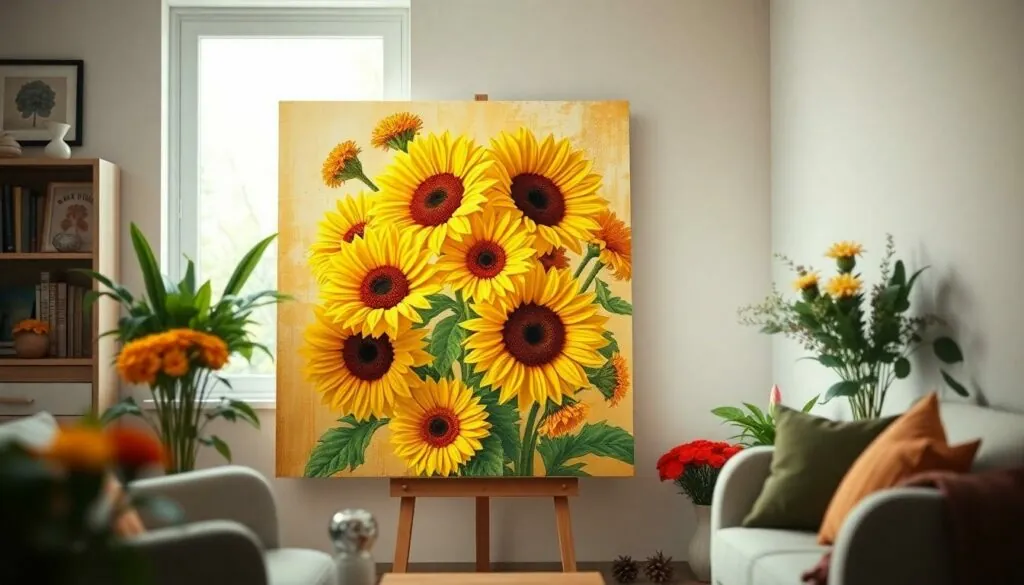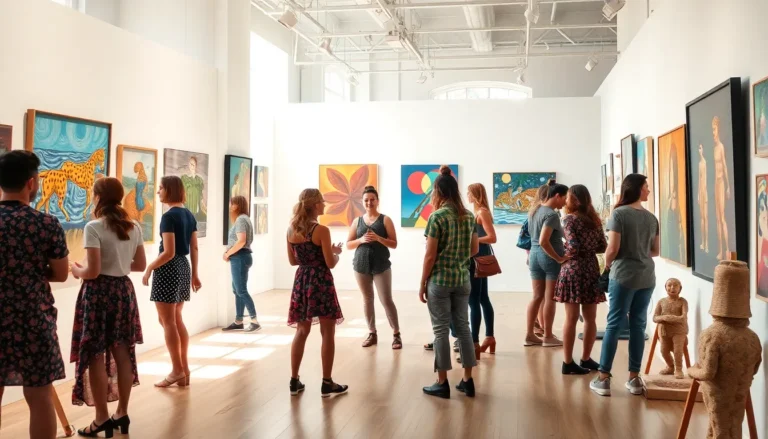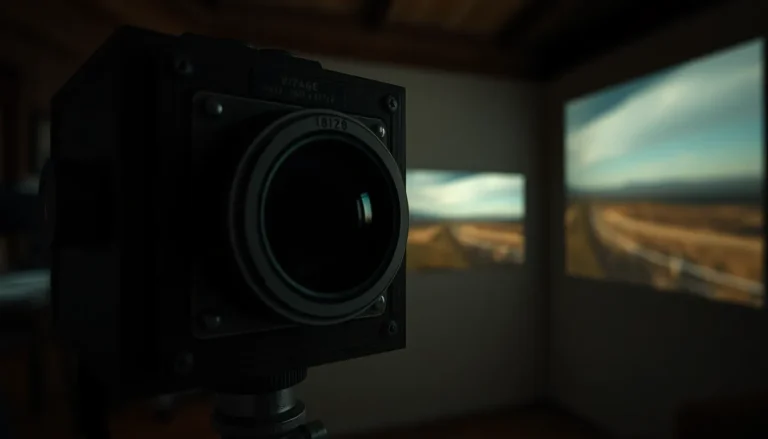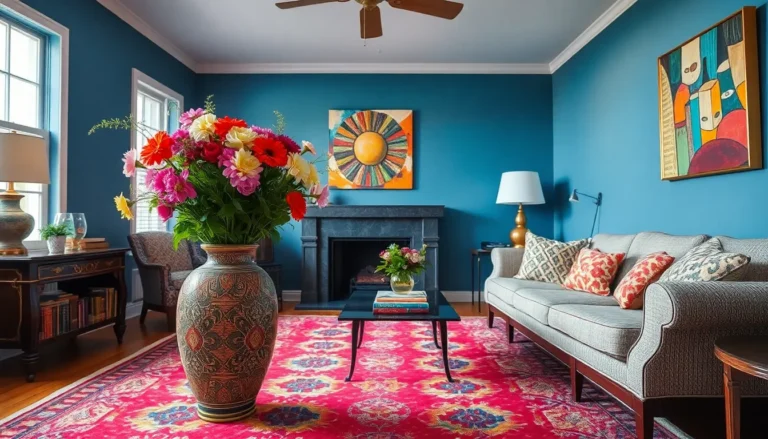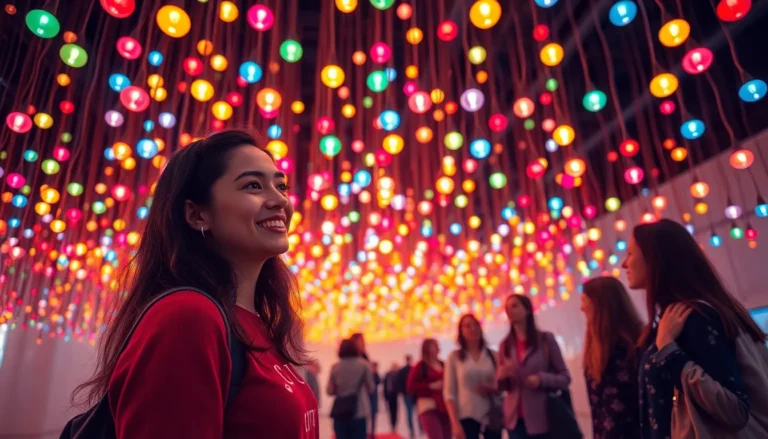Table of Contents
ToggleYellow flower paintings have a unique charm that can brighten any space. These vibrant works of art capture the essence of sunshine, joy, and the beauty of nature. Who wouldn’t want a splash of cheerfulness on their walls? Whether it’s a bold sunflower or delicate daisies, yellow flowers evoke feelings of happiness and warmth, making them perfect for any room.
Overview of Yellow Flower Painting
Yellow flower paintings capture the essence of radiance and optimism. Artists often choose yellow flowers like sunflowers, daisies, and marigolds to convey messages of happiness. The vibrant hues in these artworks brighten spaces, transforming atmospheres with warmth.
Many collectors appreciate yellow flower paintings for their emotional impact. These artworks serve as perfect focal points, drawing the eye and sparking joy. Viewers frequently describe feelings of cheerfulness when surrounded by such pieces. Interior designers recommend them for living rooms, kitchens, and workspaces to create uplifting environments.
Art movements also embrace yellow flower themes. Impressionists often featured natural scenes, showcasing flowers in their work. The technique used involved capturing light and shadow, which enhances the visual appeal of the yellow hues. Contemporary artists incorporate abstract styles, emphasizing the energetic qualities of yellow flowers.
Creating yellow flower paintings involves various mediums. Oils, acrylics, and watercolors offer different textures and depth. Each medium can highlight the subtle variations in yellow shades, bringing flowers to life on canvas. Composition remains crucial, whether the focus is on single blooms or vibrant bouquets.
Photography additionally complements this genre. Photographers capture yellow flowers in various settings, offering inspiration for painters. Such images provide an excellent reference for color application and composition strategies, aiding artistic creation.
Yellow flower paintings represent a celebration of nature’s beauty. Their vibrant colors and joyful themes invite viewers to appreciate the simple pleasures in life. Art lovers find these paintings essential for creating cheerful, inviting spaces.
Historical Significance
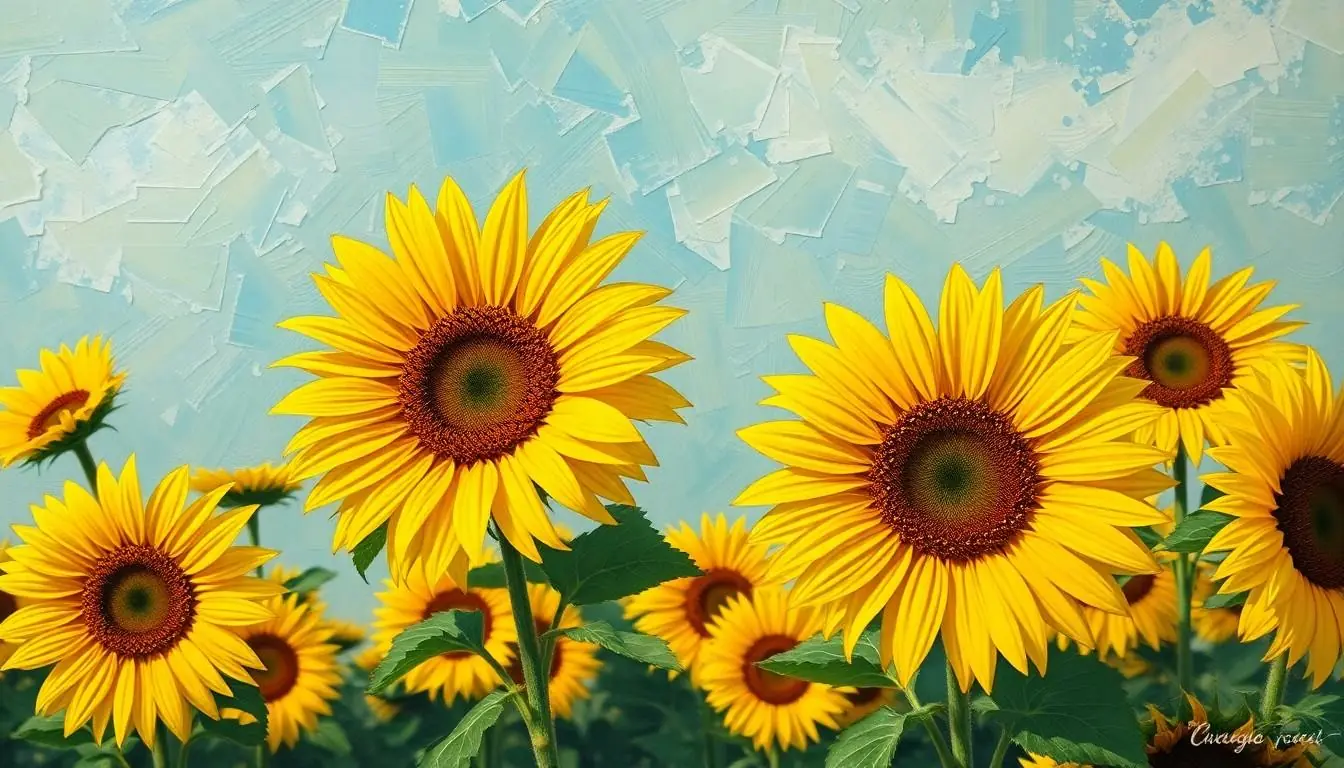
Yellow flower paintings possess rich historical significance, reflecting both artistic expression and cultural meaning.
Influential Artists
Vincent van Gogh stands out as a pivotal figure, particularly for his iconic depiction of sunflowers. Claude Monet also explored yellow flowers, using them to capture light and atmosphere in his works. Georgia O’Keeffe celebrated yellow blooms in her distinct style, emphasizing their bold forms and colors. Each artist contributed uniquely, showcasing yellow flowers as symbols of vitality and inspiration within their art.
Cultural Representations
Various cultures hold yellow flowers in high regard. In Asian traditions, these blooms often symbolize prosperity and good fortune. Cultures like the Native American Cherokee convey love and affection through the depiction of sunflowers. French Impressionists frequently utilized yellow flowers to express joy and serenity in their works. These representations enhance the artistic landscape, affirming yellow flowers as enduring motifs across artistic movements.
Techniques Used in Yellow Flower Painting
Yellow flower paintings utilize various techniques to enhance their vibrancy and emotional impact. Artists often apply specific color theories to achieve desired effects.
Color Theory and Its Importance
Color theory plays a pivotal role in yellow flower paintings. The warm tones of yellow evoke feelings of happiness and optimism. Combinations with complementary colors, like purples or blues, create a striking contrast that captures attention. Artists use analogous colors, such as oranges and greens, to produce harmonious blends that enrich the overall composition. Knowing how colors interact fosters a deeper understanding of mood and theme. Effective use of color can transform a simple floral subject into a captivating piece of art.
Brushwork Styles
Different brushwork styles significantly affect the portrayal of yellow flowers. Impasto techniques add dimension through thick, textured applications of paint that catch light. Artists often favor loose, expressive strokes to convey motion and life, mimicking the natural swaying of flowers. Additionally, fine detail work enhances individual petals, giving them realism and depth. Each brushstroke impacts the depiction, from soft washes for delicate petals to bold lines for structure. Understanding these styles helps artists communicate their vision effectively.
Famous Yellow Flower Paintings
Yellow flower paintings hold a significant place in art history, showcasing the vibrancy and positivity associated with these blooms. Notable works by eminent artists capture the essence of yellow flowers, reflecting their beauty and charm.
Analyzing Renowned Works
Vincent van Gogh’s “Sunflowers” exemplifies the allure of yellow flowers in art. This series features vivid yellows and dynamic brushstrokes, illustrating joy and warmth. Claude Monet’s “Bouquet of Sunflowers” showcases the interplay of light and texture, encapsulating the fleeting nature of beauty. Georgia O’Keeffe’s “Yellow Calla Lilies” emphasizes form and color, inviting viewers to appreciate simplicity. Each painting communicates unique emotions, drawing viewers into their vibrant worlds. These renowned works significantly contribute to the legacy of yellow flower paintings, illustrating their lasting impact.
Comparing Styles Across Artists
Artists employ diverse styles when depicting yellow flowers, resulting in varied visual experiences. Impressionists like Monet focus on light and color, creating a soft, ephemeral quality. Artists like van Gogh adopt bold colors and expressive brushwork, emphasizing emotional intensity. Their distinctive techniques highlight individual interpretations of yellow flowers. O’Keeffe favors abstraction, using simplified forms to evoke emotion. Each artist’s approach accentuates different aspects of yellow flowers, allowing for rich comparisons and deeper appreciation of this subject in art.
Modern Interpretations
Artists today infuse yellow flower paintings with contemporary techniques. Bold abstracts and minimalism often play a significant role in redefining traditional depictions. Vivid yellows combined with geometric shapes can evoke new emotions, bridging past techniques and modern aesthetics. Contemporary artists frequently experiment with non-traditional materials, incorporating mixed media to enhance visual impact.
Innovative approaches often emphasize environmental themes, linking yellow flowers to sustainability movements. Artists create works that reflect ecological concerns, using flowers as symbols for growth and renewal. Each painting carries messages about nature’s fragility and vitality, resonating with viewers on multiple levels. Textures created through layering paint or integrating other materials draw attention to the tactile nature of these artworks.
Local artists also inspire modern interpretations. Community art initiatives focus on yellow flowers as symbols of hope and joy within urban settings. In addition to showcasing local flora, these projects encourage public engagement through interactive installations and workshops. This approach fosters a sense of connection among participants, transforming spaces while celebrating vibrant flora.
Art collectors increasingly seek modern yellow flower paintings for both aesthetic and emotional reasons. They appreciate how contemporary interpretations provide fresh perspectives on classic themes. Whether it’s a bold statement piece or a subtle accent, yellow flower art continues to captivate audiences.
Events like gallery exhibitions and art fairs often highlight contemporary yellow flower works, bringing together diverse interpretations under one roof. Engagement with these events enhances public appreciation for the artists’ varied styles and messages. Collectively, modern interpretations of yellow flower paintings celebrate the vibrancy of nature while inviting thoughtful discourse on artistic expression and cultural significance.
Yellow flower paintings continue to captivate audiences with their vibrant energy and uplifting themes. They not only enhance spaces but also evoke emotions tied to joy and optimism. The rich history and cultural significance behind these artworks reflect a deep appreciation for nature’s beauty.
As artists explore innovative techniques and modern interpretations, the allure of yellow flowers remains timeless. Whether through classic styles or contemporary expressions, these paintings invite viewers to celebrate life’s simple pleasures. Ultimately, yellow flower art serves as a reminder of the warmth and positivity that can brighten any environment.

